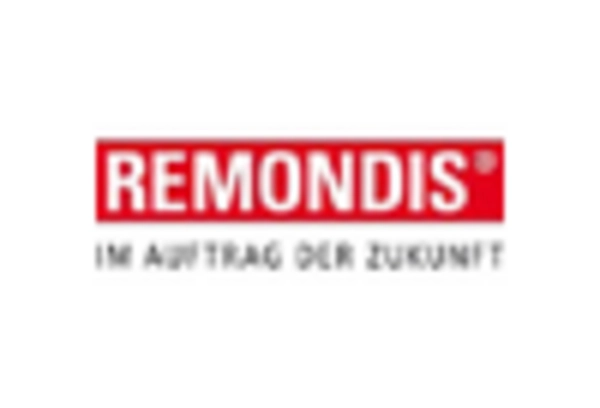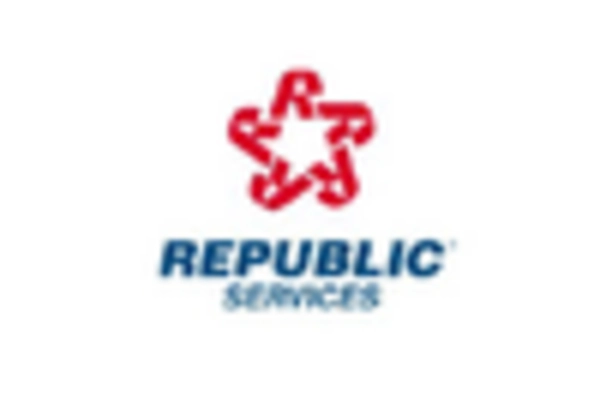Growing Consumer Awareness
The increasing awareness among consumers regarding environmental issues is a pivotal driver for the Textile Waste Management Market. As individuals become more conscious of the ecological impact of textile waste, they are demanding sustainable practices from brands. This shift in consumer behavior is prompting companies to adopt more responsible waste management strategies. Reports indicate that approximately 60% of consumers are willing to pay more for sustainable products, which is influencing brands to invest in textile recycling and waste reduction initiatives. Consequently, this heightened awareness is likely to propel the growth of the Textile Waste Management Market, as businesses strive to align with consumer expectations and enhance their brand image.
Regulatory Frameworks and Policies
The establishment of stringent regulatory frameworks and policies is a crucial driver for the Textile Waste Management Market. Governments are increasingly implementing regulations aimed at reducing textile waste and promoting sustainable practices. For example, several countries have introduced laws mandating the recycling of textiles and the reduction of landfill waste. These regulations not only compel manufacturers to adopt better waste management practices but also create a competitive landscape where compliance becomes essential for market participation. As a result, the Textile Waste Management Market is likely to experience growth as companies invest in compliance strategies and innovative waste management solutions to meet regulatory requirements.
Corporate Sustainability Initiatives
The rise of corporate sustainability initiatives is influencing the Textile Waste Management Market. Many companies are now integrating sustainability into their core business strategies, recognizing the long-term benefits of responsible waste management. This trend is evident as major fashion brands commit to reducing their environmental footprint by implementing recycling programs and sustainable sourcing practices. Reports suggest that over 70% of companies in the textile sector are actively pursuing sustainability goals, which includes improving waste management practices. This corporate shift not only enhances brand reputation but also drives investment in the Textile Waste Management Market, as businesses seek to innovate and adopt more sustainable practices.
Advancements in Recycling Technologies
Technological advancements in recycling processes are significantly shaping the Textile Waste Management Market. Innovations such as chemical recycling and fiber-to-fiber recycling are enabling the transformation of textile waste into new, high-quality materials. For instance, recent developments have led to the creation of closed-loop systems that can recycle textiles multiple times without degrading quality. This not only reduces waste but also conserves resources, as it minimizes the need for virgin materials. The market for textile recycling technologies is projected to grow at a compound annual growth rate of over 10% in the coming years, indicating a robust demand for efficient waste management solutions within the Textile Waste Management Market.
Economic Incentives for Waste Reduction
Economic incentives for waste reduction are emerging as a significant driver for the Textile Waste Management Market. Governments and organizations are increasingly offering financial support and incentives to businesses that implement effective waste management strategies. These incentives may include tax breaks, grants, or subsidies for companies that invest in recycling technologies or sustainable practices. Such economic measures encourage businesses to prioritize waste reduction and recycling, thereby fostering a more sustainable textile industry. As a result, the Textile Waste Management Market is likely to benefit from these economic incentives, which can stimulate innovation and investment in waste management solutions.


















Leave a Comment